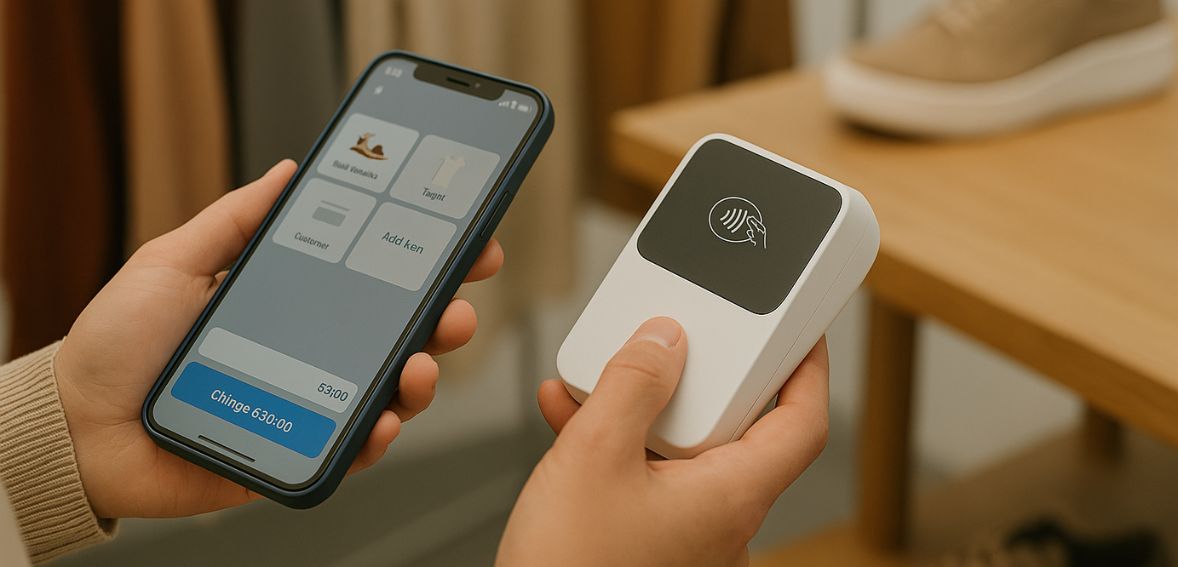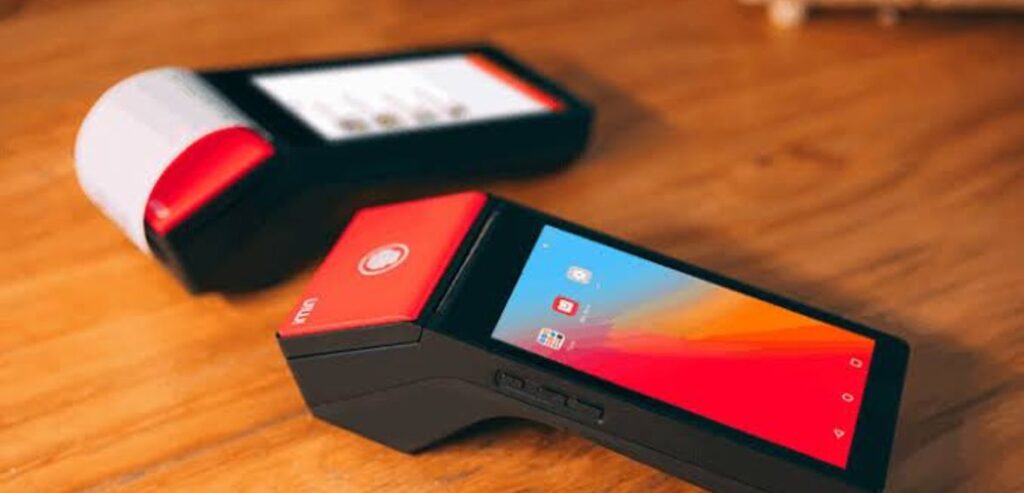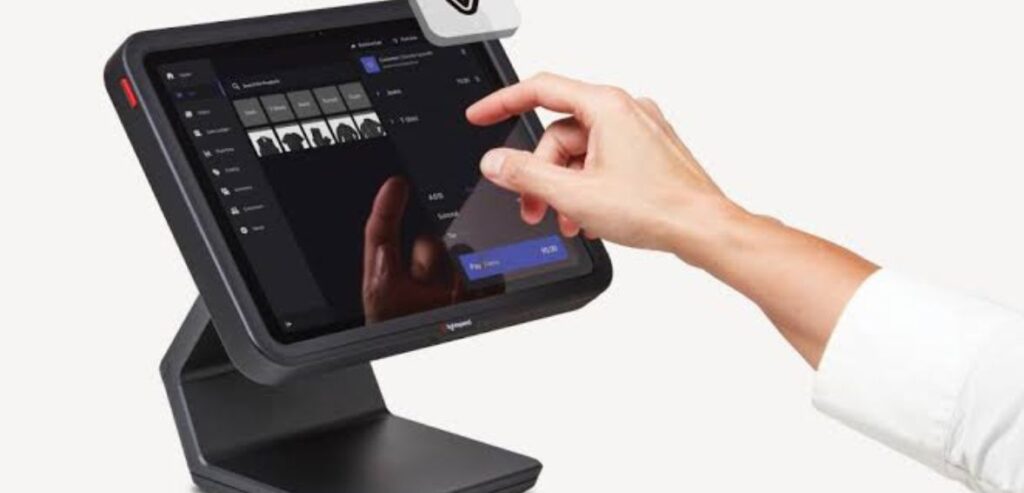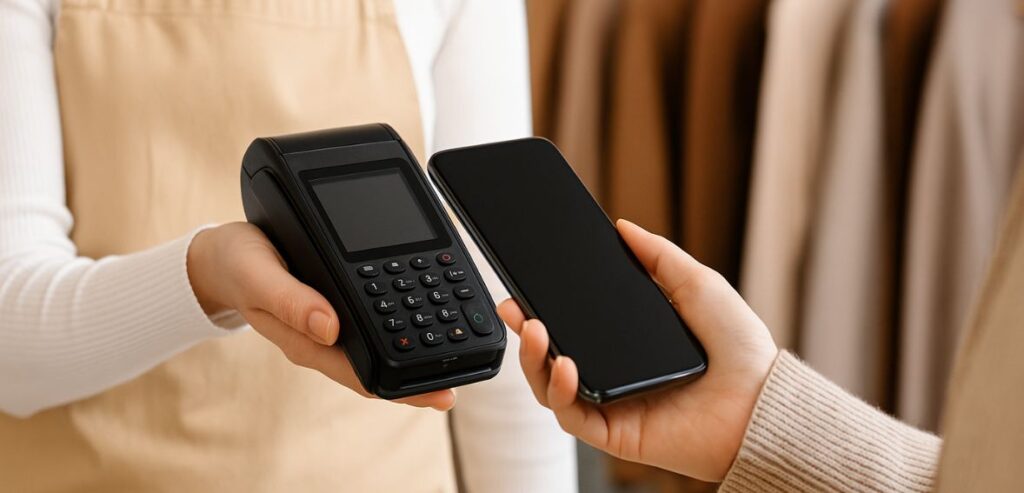
By alphacardprocess June 3, 2025
Mobile point-of-sale (mPOS) systems have emerged as essential tools for companies looking for agility, efficiency, and improved customer experiences in the fast-paced world of 2025. The appropriate mobile POS system can completely transform your business, regardless of whether you are a mobile service provider, a busy café owner, or a boutique retailer. This thorough guide explores the top mobile point-of-sale (POS) systems of 2025, emphasizing their features, advantages, and fit for a range of business requirements.
Understanding Mobile POS Systems

Businesses can use smartphones, tablets, or specialized wireless devices to process transactions with a mobile point-of-sale system. Sales can take place anywhere, including on the shop floor, at pop-up events, or during home deliveries, thanks to mobile POS’s flexibility in contrast to traditional stationary point-of-sale systems. Typical key features are:
- Portability: Sell while moving around and not being restricted to a single spot.
- Cloud-Based Operations: Get sales reports, inventory, and real-time data from any location.
- Integrated Payment Processing: Take credit/debit cards, digital wallets, and contactless payments, among other payment methods.
- Inventory management :It includes keeping an eye on stock levels, managing product catalogs, and getting low-stock alerts.
- Customer relationship management: It includes tracking past purchases, storing customer information, and putting loyalty programs into place.
Top Mobile POS Systems of 2025
The mobile POS (mPOS) market has grown rapidly in 2025, with businesses demanding faster, more flexible, and feature-rich solutions to meet evolving customer expectations. Whether you’re running a coffee cart, managing an apparel boutique, or juggling online and in-store operations, there’s a mobile POS tailored to your workflow. Here are the leading systems redefining retail and service industries in 2025:
Square POS: Simplicity Meets Power for Small Businesses

For small business owners, Square POS continues to be the most popular and easily accessible mobile point of sale system. Its simplicity of use remains its best feature; companies can register, order a card reader, and begin taking payments in a matter of minutes. The system is perfect for vendors who are on the go or who run pop-ups because it supports card, tap-to-pay, and mobile wallet transactions.
Square introduced smart tools in 2025, such as enhanced mobile inventory tracking and real-time sales forecasting. Its mobile app, which is fully functional on both iOS and Android, enables retailers to control sales, keep an eye on inventory levels, and produce financial reports right from their smartphones. It’s the greatest option because the basic plan has no monthly costs and hardware like the Square Terminal and Square Handheld is reasonably priced.
Shopify POS: Best for Omnichannel Retailers
The easiest way to connect your online and offline businesses is with Shopify POS if you’re an online retailer growing into physical sales. Shopify POS, developed by one of the top brands in online retail, seamlessly synchronizes sales, inventory, and customer information between the two platforms.
AI-powered inventory management and intelligent checkout features that customize the experience for loyal customers are two examples of how Shopify enhanced its mobile point-of-sale system in 2025. You won’t ever oversell or lose track of inventory across channels thanks to the unified backend. Few platforms can bridge the digital and physical worlds like Shopify POS Pro, which also offers email cart recovery tools, custom discounts, and in-store pickups. Businesses that frequently host pop-up stores or have both an online and physical storefront presence will find it especially helpful.
Toast POS: Purpose-Built for Restaurants and Cafés

In 2025, Toast POS, which was created especially for food and beverage companies, will still be the industry leader. From the front-of-house to the back kitchen, its mobile-first features, such as menu syncing, kitchen display systems (KDS), and handheld ordering devices, help to streamline operations.
With AI-assisted demand forecasting and inventory alerts, Toast has improved its 2025 offering to reduce food waste and assist kitchen managers in making the best purchases. Within a single mobile interface, the platform facilitates delivery, online ordering, contactless payments, and loyalty programs. Toast’s sturdy hardware and strong functionality are designed to withstand the high-volume, fast-paced environment of the food industry, whether you’re running a full-service dining establishment, fast-casual restaurant, or food truck.
Lightspeed POS: Advanced Retail Management at Your Fingertips

Lightspeed POS is an ideal solution for mid-sized retailers with large inventories and complex sales workflows. Known for its extensive product catalog capabilities, Lightspeed allows businesses to track thousands of SKUs, manage vendor relationships, and apply intricate discount rules across multiple stores.
In 2025, Lightspeed has focused on mobility—introducing new mobile tools for inventory scanning, customer lookup, and checkout from any location on the sales floor. It also offers in-depth data analytics and integrates with platforms like QuickBooks, Mailchimp, and BigCommerce. For fashion boutiques, sporting goods stores, and specialty retailers that want scalability without sacrificing control, Lightspeed POS provides a powerful and mobile-compatible experience.
Clover POS: Flexible and App-Rich for Growing Businesses
Clover POS is notable for its modular design and degree of customization. Depending on their size and service model, businesses can select from a variety of hardware types, such as Clover Flex, Clover Mini, and Clover Station. One of its main attractions is its app marketplace, which lets users add features like payroll, CRM, employee scheduling, and loyalty programs.
By 2025, Clover has improved its fraud prevention features and added AI-powered transaction tracking. Numerous payment methods are supported, such as split bills, QR code scanning, and tap-to-pay. Clover POS works with a wide variety of businesses, such as salons, retail stores, food vendors, and repair services, and it is compatible with both iOS and Android. Those who want to customize their POS to fit particular workflows without making the process too complicated will find it especially appealing.
Revel Systems POS: Enterprise-Level Control in a Mobile Package
Revel Systems is a cloud-native point-of-sale platform designed for large businesses and enterprises that require mobile flexibility and centralized control. Its system combines sophisticated accounting, CRM, and employee scheduling modules with mobile point-of-sale (POS) tools.
Revel has concentrated on improving multi-location management in 2025 and has implemented predictive analytics to assist chain operators in making staffing and inventory plans based on real-time foot traffic data. Even in high-traffic settings like stadiums, fast-food restaurants, and big-box stores, the mobile point-of-sale units are quick, dependable, and designed for speed. One of the most dependable is its offline mode, which guarantees continuous service even in places with erratic internet.
PayPal Zettle: Quick Setup for Micro-Merchants
PayPal Zettle (formerly iZettle) is a great option for business owners looking for a mobile-first, hassle-free point-of-sale system. It functions flawlessly with tablets and smartphones and is designed for rapid deployment. Zettle’s basic card reader accepts contactless, chip, and swipe payments and pairs via Bluetooth.
Zettle has enhanced its dashboard in 2025 to provide more insightful analytics and now allows integrations with accounting software such as QuickBooks and Xero. Users can add products, apply discounts, and send digital receipts instantly with this user-friendly yet functional system. Zettle offers market traders, food stall vendors, freelancers, and crafters a portable, cost-effective method of processing payments with minimal overhead.
Helcim POS: Transparent Pricing for Service-Based Businesses
In 2025, Helcim POS has become more well-known due to its interchange-plus pricing model, which is transparent and frequently absent from traditional POS providers. It works well for service-based companies that require online payments, card-present capabilities, and invoicing in a single platform, such as consultants, fitness instructors, and mobile repair specialists.
Any device can be transformed into a potent point-of-sale system with Helcim’s mobile app, and its virtual terminal and payment links give distant clients flexible billing options. In addition to providing inventory management, recurring billing, and backend CRM tools, the company has concentrated on making its software user-friendly. Helcim stands out for providing merchant services without the usual hidden fees or contracts in a world where fairness and secure payment methods are important.
Choosing the Right Mobile POS System

A number of factors influence the choice of the best mobile POS system, and understanding the key considerations when choosing the right POS system can help ensure you pick the solution that fits your business needs.
- Business Type: Select a system that is specific to your industry. Retailers, eateries, and service providers all have different needs.
- Budget: Take into account both one-time hardware expenses and recurring transaction or subscription fees.
- Scalability: Make sure the system can expand to accommodate new locations or higher transaction volumes as your company grows.
- Integration Requirements: Assess how well the system works with the platforms and tools you currently have.
- User Experience: To cut down on training time and boost employee productivity, choose an intuitive interface.
Conclusion
Mobile point-of-sale (POS) systems have advanced well beyond basic payment processors in today’s tech-driven, fast-paced market. Inventory management, customer engagement, real-time analytics, staff coordination, and smooth omnichannel experiences are all supported by these dynamic, all-in-one business tools in 2025. Whether you are managing a mobile food truck, a boutique retail store, or an expanding multi-location business, the correct mobile POS can significantly improve efficiency and open up new growth prospects.
With emerging features like cloud-based integrations, tap-to-phone payments, and AI-powered reporting becoming standard, choosing a mobile point-of-sale system is becoming more than just a hardware choice; it’s a calculated investment in the future of your company. Before selecting a system, it is crucial to evaluate your long-term objectives, customer expectations, and operational needs.
In the end, the greatest mobile point-of-sale system for 2025 is one that works with you, not just for you; it will improve every customer interaction, empower your team, and adjust to your workflows. With the correct platform in place, your company is leading the future rather than just keeping up with it.